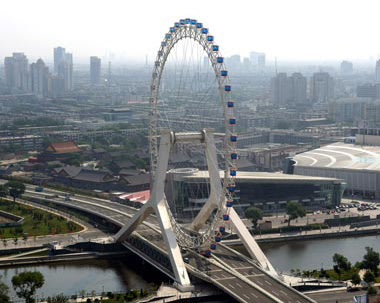F-Line to Dudley
Senior Member
- Joined
- Nov 2, 2010
- Messages
- 9,553
- Reaction score
- 10,430
I think you underestimate the effect of moving the orange line. The Thompson Sq stop was surrounded by dense residential on all 4 sides. The CC just barely skirts Charlestown at all. I'm not saying the El shouldn't have come down, but most of Charlestown (like most of Southie) feels underserved by rail transit.
That may be more psychological because of Rutherford Ave.'s width than distance-related. CC is right bloody there...you can see the T logo from Thompson Sq. and the CC overpass is right next to the intersection (although probably not signed well enough as a preferred access point from the Thompson side into the station). Improve Rutherford/Austin when Rutherford gets put on its road diet and either widen this sidewalk or fork another Austin St.-leaning incline onto the existing footramp setup, stick a T sign at the footbridge so people know they don't have to cross the street, and it's fine.
The El just skipped over all the density on Main St. out to Sullivan with an unusually long gap when an intermediate in the present-day vicinity of Edwards Playground was probably warranted. They didn't do it because the Green Line branch was still running underneath the El all that time making stops on every corner. And the second GL branch running down Chelsea and Bunker Hill St.'s.
But that's a 92/93 bus problem. If the frequencies are too lousy (they are), increase them. It's a pretty crisp 11-minute trip to Sullivan from the Financial District on the 92, 22 mins. when the 92 gets extended at peak to loop around all of Assembly, and 15 minutes on the 93. But the headways are woeful: unnaturally short peak periods of 15 min. frequencies that don't even span the whole traditional rush hour, then off-peak of a meh 20 mins. on the 93 and a horrible 35-40 mins. on the 92.
There's your problem. The 92 has no business running that infrequently at all, and the 93's frequencies aren't keeping up with the times around the Navy Yard redevelopment. One is an outright max-priority transit equity fix, the other is a matter of unfreezing frequencies that have been static for 30 years and are probably minimally adequate for Bunker Hill St...but really haven't tracked with escalating demand around City Sq./Navy Yard/Spalding.
This isn't a rail transit problem. It's a problem of a high-ridership, high- neighborhood dependency bus running half as often as they need to. With the quite good travel times those routes have you don't even need to do much in the way of Key Bus Improvements things on this route like signal priority, stop consolidation, or reshaping. They're pretty good as-is. Just up the frequencies to something less embarrassing and the whole Main St. corridor gets better transit than it's had at any point since the 92's Green Line branch was bustituted 66 years ago. And City Sq./Navy Yard gets its transit cavity filled in commensurate with the development cavity being filled in.
Some neighborhood transit inequities have no rail or BRT tactical nuclear strike angle to them. This is one of those. The whole of the neighborhood is packed into barely 1 square mile and is a dozen minutes or less every direction to every transit transfer in the land. I would argue it harms the neighborhood more to stray focus away from purely local bus service enhancements exploiting those naturally fast travel times to the hilt. The more you demand shiny things for shiny things' sake the less frequently the 92 and 93 are going to run. Frequencies are the showcase for the neighborhood, not shiny things.


